Africa · Angola · Congo, Democratic Republic of the · Kenya · Regions · South Africa · Tanzania · Travel Miscellany · Videos · Zimbabwe
Wildlife documentaries you must watch in lockdown
With a lot of the world in a state of ‘lock-down’ in one form or another, there is no better time to be transported to Africa from the comfort of your own armchair. Exploring some of our favourite wildlife documentaries will give you hours of entertainment, but may also serve as some inspiration as to where you could stay should you wish to visit Africa once it is safe to do. When you do, you may even be lucky enough to bear witness to some of your own ‘documentary-worthy’ sightings.
Dynasties: Painted Wolves
By far, Africa’s most enigmatic animals, the wild dog, aka painted wolf, is one of the most highly sought-after animals on safari. The BBC constantly provides jaw-dropping camera work and thrilling scenes which are all rounded off by Sir David Attenborough’s Narration.
 Never before have the lives of wild dogs been so meticulously documented and broadcasted. With threats around every corner and in every water source, this particular episode demonstrates the vulnerability of the painted wolves and challenges the stigma which had previously labelled them as cold-heart killers and pests.
Filmed in Mana Pools, Zimbabwe, this National Park is one of the most spectacular for viewing wild dogs, it is also home to a fabulous population of lion, buffalo and the hugely impressive elephants that stand on their hind legs to reach the topmost branches of the tallest trees.
Never before have the lives of wild dogs been so meticulously documented and broadcasted. With threats around every corner and in every water source, this particular episode demonstrates the vulnerability of the painted wolves and challenges the stigma which had previously labelled them as cold-heart killers and pests.
Filmed in Mana Pools, Zimbabwe, this National Park is one of the most spectacular for viewing wild dogs, it is also home to a fabulous population of lion, buffalo and the hugely impressive elephants that stand on their hind legs to reach the topmost branches of the tallest trees.
 Sir David spent a number of nights at Vundu Camp in Mana whilst filming this episode which has proven time and time again that it is one of the best places to visit on the continent to search for these elusive canids.
Brother’s in Blood: Lions of the Sabi Sand
Utter the name ‘Mapogo’ in a South African safari lodge and all the guides will know exactly what you are referring to. A coalition of five huge male lions that controlled and dominated the Sabi Sands for years. Coalitions this large had not been recorded before, however it was the lions’ brutality that made them stand out from others. The Mapogo’s were some of the fiercest lions to have ever graced the Greater Kruger, killing over a hundred other lions including cubs and females, these lions were a force to be reckoned with.
Sir David spent a number of nights at Vundu Camp in Mana whilst filming this episode which has proven time and time again that it is one of the best places to visit on the continent to search for these elusive canids.
Brother’s in Blood: Lions of the Sabi Sand
Utter the name ‘Mapogo’ in a South African safari lodge and all the guides will know exactly what you are referring to. A coalition of five huge male lions that controlled and dominated the Sabi Sands for years. Coalitions this large had not been recorded before, however it was the lions’ brutality that made them stand out from others. The Mapogo’s were some of the fiercest lions to have ever graced the Greater Kruger, killing over a hundred other lions including cubs and females, these lions were a force to be reckoned with.
 The documentary follows their uprising from cubs to kings and their eventual downfall, yet it highlights certain character traits that are an insightful and extraordinary to see. Their bloodline still lives on today and whilst the Sabi Sands is the area to visit for a chance to see the heirs of arguably the most famous lion coalition in Africa, it is also home to some of the best leopard viewing in the world.
Okavango: River of Dreams
This 3-part series told by the Joubert’s is one of the most cinematically impressive documentaries in recent times. From breath-taking aerial shots above the Okavango Delta, to outstanding underwater scenes in the meandering waterways, not to mention the adrenaline pumping action sequences, this series has it all. What we love about this documentary though, is that it feels like an exploration along the river.
The documentary follows their uprising from cubs to kings and their eventual downfall, yet it highlights certain character traits that are an insightful and extraordinary to see. Their bloodline still lives on today and whilst the Sabi Sands is the area to visit for a chance to see the heirs of arguably the most famous lion coalition in Africa, it is also home to some of the best leopard viewing in the world.
Okavango: River of Dreams
This 3-part series told by the Joubert’s is one of the most cinematically impressive documentaries in recent times. From breath-taking aerial shots above the Okavango Delta, to outstanding underwater scenes in the meandering waterways, not to mention the adrenaline pumping action sequences, this series has it all. What we love about this documentary though, is that it feels like an exploration along the river.
 Witness where the first water arrives from the Angolan highlands, through to the fan-like wetland all the way to the sprawling fingers that reach the Kalahari before withering into nothing. This adventure constantly reminds us that it is not just the big things that keep our eco-systems flourishing, although the elephants open up the waterways, fish like the tilapia and barbel are just as important, if not more so, to allow these wild places to flourish.
Witness where the first water arrives from the Angolan highlands, through to the fan-like wetland all the way to the sprawling fingers that reach the Kalahari before withering into nothing. This adventure constantly reminds us that it is not just the big things that keep our eco-systems flourishing, although the elephants open up the waterways, fish like the tilapia and barbel are just as important, if not more so, to allow these wild places to flourish.
 Whilst the Delta is a vast and varied landscape, visiting here guarantees you a private and intimate experience with some of the best wildlife viewing on the planet. Whether you decide to walk, go by vehicle or glide along in a mokoro, exploring the Delta is an invigorating and exciting safari experience.
National Geographic’s Lion Kingdom
The amount of lion documentaries that have been made must number in their hundreds, if not thousands, yet finding one that eclipses them all makes it all the sweeter. Ruaha is known for its huge lion population (around 10% of Africa’s lions call it home) so it is no surprise that some of the best wildlife scenes have been played out here.
Whilst the Delta is a vast and varied landscape, visiting here guarantees you a private and intimate experience with some of the best wildlife viewing on the planet. Whether you decide to walk, go by vehicle or glide along in a mokoro, exploring the Delta is an invigorating and exciting safari experience.
National Geographic’s Lion Kingdom
The amount of lion documentaries that have been made must number in their hundreds, if not thousands, yet finding one that eclipses them all makes it all the sweeter. Ruaha is known for its huge lion population (around 10% of Africa’s lions call it home) so it is no surprise that some of the best wildlife scenes have been played out here.
 Whilst lions challenging the huge herds of buffalo that congregate in their thousands is still an incredible spectacle, what makes this 3-part documentary series stand out is some of the never-seen-before animal behaviour. From lions digging in riverbeds for water to baboons keeping quiet instead of alarm calling when predators are present, it makes for some extraordinary viewing and of course there is an explosive end to each episode which is not to be missed.
Whilst lions challenging the huge herds of buffalo that congregate in their thousands is still an incredible spectacle, what makes this 3-part documentary series stand out is some of the never-seen-before animal behaviour. From lions digging in riverbeds for water to baboons keeping quiet instead of alarm calling when predators are present, it makes for some extraordinary viewing and of course there is an explosive end to each episode which is not to be missed.
 Ruaha is a wild and untamed National Park in the South of Tanzania. With an area the size of Israel, the scale of the park is hard to imagine, especially as there only a handful of lodges here! Shut in April and May due to the long rains, it is towards the end of the dry season (August-October) at camps like Jongomero or Ikuka where you are most likely to witness some of these jaw-dropping scenes.
The Last Animals
Whilst Stroop grabbed most of the headlines, The Last Animals went under the radar, yet it probed deeper in tackling some of the biggest issues in conservation today and this documentary-film is one not to be missed. The illegal trade of ivory and rhino horn is wiping out Africa’s population of these beloved creatures and The Last Animals explores the key battles that are being fought across the continent to tackle this. From the Last Northern white rhino in Kenya to the elephants of Kruger National Park, this is a stark reminder of how quickly Africa’s beloved animals could disappear from our planet. But, there is hope. Exploring the different options that conservationists are taking; from the front-line rangers to the owner’s game farms, the issues tackled are enlightening and hard hitting, creating an incredibly powerful piece of film. Prepare for an emotional rollercoaster.
Ruaha is a wild and untamed National Park in the South of Tanzania. With an area the size of Israel, the scale of the park is hard to imagine, especially as there only a handful of lodges here! Shut in April and May due to the long rains, it is towards the end of the dry season (August-October) at camps like Jongomero or Ikuka where you are most likely to witness some of these jaw-dropping scenes.
The Last Animals
Whilst Stroop grabbed most of the headlines, The Last Animals went under the radar, yet it probed deeper in tackling some of the biggest issues in conservation today and this documentary-film is one not to be missed. The illegal trade of ivory and rhino horn is wiping out Africa’s population of these beloved creatures and The Last Animals explores the key battles that are being fought across the continent to tackle this. From the Last Northern white rhino in Kenya to the elephants of Kruger National Park, this is a stark reminder of how quickly Africa’s beloved animals could disappear from our planet. But, there is hope. Exploring the different options that conservationists are taking; from the front-line rangers to the owner’s game farms, the issues tackled are enlightening and hard hitting, creating an incredibly powerful piece of film. Prepare for an emotional rollercoaster.
 Asilia’s Ol Pejeta Bushcamp is the best place to visit if you want to see the last two Northern White Rhinos. Sadly the last male, Sudan, died in 2018, Ol Pejeta’s conservation work is outstanding and makes for a vital trip if you are in Kenya.
Virunga
The mountain gorillas of the Democratic Republic of the Congo are without doubt the least viewed of the gorilla populations. With Uganda and Rwanda being far safer for tourists, these two destinations have taken the spotlight over gorilla trekking in recent years, but the gorillas of Virunga National Park in the DRC should not be forgotten. In a country embroiled in a civil war, Netflix delves into the problem of poaching, the sacrifices made and the bonds between rangers and the orphaned gorillas. Whilst the rangers battle against poachers on a weekly basis, the civil war gets closer to ‘home’ with filmmakers and participants all caught in the crossfire. Conveying the brutal truth of what it is like to try and protect these precious specious in one of Africa’s longest protected parks, it is no wonder Virunga won countless awards.
Asilia’s Ol Pejeta Bushcamp is the best place to visit if you want to see the last two Northern White Rhinos. Sadly the last male, Sudan, died in 2018, Ol Pejeta’s conservation work is outstanding and makes for a vital trip if you are in Kenya.
Virunga
The mountain gorillas of the Democratic Republic of the Congo are without doubt the least viewed of the gorilla populations. With Uganda and Rwanda being far safer for tourists, these two destinations have taken the spotlight over gorilla trekking in recent years, but the gorillas of Virunga National Park in the DRC should not be forgotten. In a country embroiled in a civil war, Netflix delves into the problem of poaching, the sacrifices made and the bonds between rangers and the orphaned gorillas. Whilst the rangers battle against poachers on a weekly basis, the civil war gets closer to ‘home’ with filmmakers and participants all caught in the crossfire. Conveying the brutal truth of what it is like to try and protect these precious specious in one of Africa’s longest protected parks, it is no wonder Virunga won countless awards.
 With the DRC being off the radar for most people, Uganda and Rwanda are the places to go gorilla trekking. Whilst Rwanda specialises in the luxury side of gorilla trekking (and with permits being $1,500), Uganda is for the more adventurous and really lends itself to those wishing to have a brilliant all-round experience. With permits being half that of Rwanda, there is also a plethora of other activities, whether you are looking for shoebills on Lake Victoria or hiking and canoeing up to Murchison Falls, Uganda is an exceptional destination.
Big Cat Week
It captured an audience of millions across the UK when it was first aired on television, and rightly so. This is the nitty, gritty side of safari that is often not seen in other documentaries. Located in Kenya’s famous Masai Mara, this series follows the lives of three different predator families: The Marsh Pride, Kike the cheetah and Bella the leopard. From getting stuck in ditches to lunches landing in the presenter’s lap, the big cats’ tales aren’t the only stories to be told. The charming, humorous, and truthful way in which Big Cat Week is filmed and presented makes you feel like you are there in the thick of the action. Whether it is Jonathon Scott, Simon King or Saba Douglas-Hamilton in front of the camera showing their love and explaining the stories behind these beautiful creatures, you can be sure that there are laughs, adrenaline pumping action and beautiful moments.
With the DRC being off the radar for most people, Uganda and Rwanda are the places to go gorilla trekking. Whilst Rwanda specialises in the luxury side of gorilla trekking (and with permits being $1,500), Uganda is for the more adventurous and really lends itself to those wishing to have a brilliant all-round experience. With permits being half that of Rwanda, there is also a plethora of other activities, whether you are looking for shoebills on Lake Victoria or hiking and canoeing up to Murchison Falls, Uganda is an exceptional destination.
Big Cat Week
It captured an audience of millions across the UK when it was first aired on television, and rightly so. This is the nitty, gritty side of safari that is often not seen in other documentaries. Located in Kenya’s famous Masai Mara, this series follows the lives of three different predator families: The Marsh Pride, Kike the cheetah and Bella the leopard. From getting stuck in ditches to lunches landing in the presenter’s lap, the big cats’ tales aren’t the only stories to be told. The charming, humorous, and truthful way in which Big Cat Week is filmed and presented makes you feel like you are there in the thick of the action. Whether it is Jonathon Scott, Simon King or Saba Douglas-Hamilton in front of the camera showing their love and explaining the stories behind these beautiful creatures, you can be sure that there are laughs, adrenaline pumping action and beautiful moments.
 The Masai Mara remains one of the best spots in the world for big cat sightings and with a big portion of the wildebeest Great Migration passing through during July-September, it is no wonder the crowds flock here. Whilst Kichwa Tembo and Speke’s Camp are excellent luxury camps, if you hopped over the border to Tanzania, there are a whole array of different lodges and camps to be explored. The game viewing is just as good as the Mara, but without the huge crowds and day trippers.
Choosing a favourite from these documentaries certainly isn’t easy and all have their own merits. I certainly haven’t touched on every documentary as there are of course plenty more out there that capture the imagination and raise some very important issues, but it would be great to hear about your favourites.
Marc Harris is Managing Director of Africa Odyssey. Africa Oydssey is run by a team of award-winning experts offering tailor-made African safari holidays.
If you would like to be a guest blogger on A Luxury Travel Blog in order to raise your profile, please contact us.
The Masai Mara remains one of the best spots in the world for big cat sightings and with a big portion of the wildebeest Great Migration passing through during July-September, it is no wonder the crowds flock here. Whilst Kichwa Tembo and Speke’s Camp are excellent luxury camps, if you hopped over the border to Tanzania, there are a whole array of different lodges and camps to be explored. The game viewing is just as good as the Mara, but without the huge crowds and day trippers.
Choosing a favourite from these documentaries certainly isn’t easy and all have their own merits. I certainly haven’t touched on every documentary as there are of course plenty more out there that capture the imagination and raise some very important issues, but it would be great to hear about your favourites.
Marc Harris is Managing Director of Africa Odyssey. Africa Oydssey is run by a team of award-winning experts offering tailor-made African safari holidays.
If you would like to be a guest blogger on A Luxury Travel Blog in order to raise your profile, please contact us.
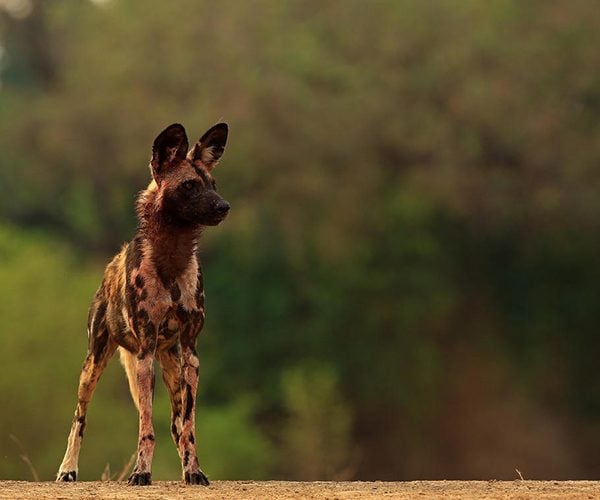 Never before have the lives of wild dogs been so meticulously documented and broadcasted. With threats around every corner and in every water source, this particular episode demonstrates the vulnerability of the painted wolves and challenges the stigma which had previously labelled them as cold-heart killers and pests.
Filmed in Mana Pools, Zimbabwe, this National Park is one of the most spectacular for viewing wild dogs, it is also home to a fabulous population of lion, buffalo and the hugely impressive elephants that stand on their hind legs to reach the topmost branches of the tallest trees.
Never before have the lives of wild dogs been so meticulously documented and broadcasted. With threats around every corner and in every water source, this particular episode demonstrates the vulnerability of the painted wolves and challenges the stigma which had previously labelled them as cold-heart killers and pests.
Filmed in Mana Pools, Zimbabwe, this National Park is one of the most spectacular for viewing wild dogs, it is also home to a fabulous population of lion, buffalo and the hugely impressive elephants that stand on their hind legs to reach the topmost branches of the tallest trees.
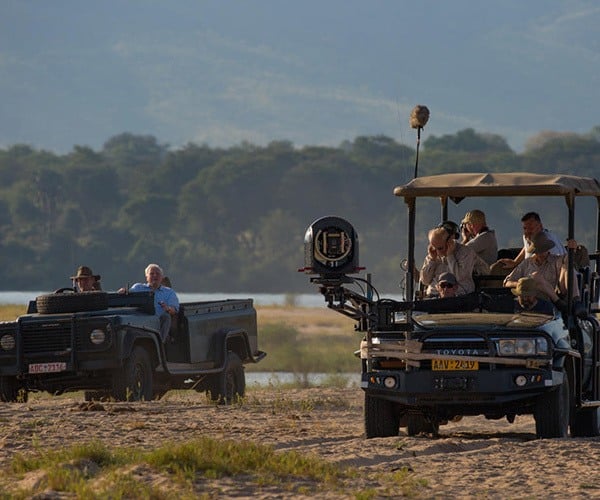 Sir David spent a number of nights at Vundu Camp in Mana whilst filming this episode which has proven time and time again that it is one of the best places to visit on the continent to search for these elusive canids.
Brother’s in Blood: Lions of the Sabi Sand
Utter the name ‘Mapogo’ in a South African safari lodge and all the guides will know exactly what you are referring to. A coalition of five huge male lions that controlled and dominated the Sabi Sands for years. Coalitions this large had not been recorded before, however it was the lions’ brutality that made them stand out from others. The Mapogo’s were some of the fiercest lions to have ever graced the Greater Kruger, killing over a hundred other lions including cubs and females, these lions were a force to be reckoned with.
Sir David spent a number of nights at Vundu Camp in Mana whilst filming this episode which has proven time and time again that it is one of the best places to visit on the continent to search for these elusive canids.
Brother’s in Blood: Lions of the Sabi Sand
Utter the name ‘Mapogo’ in a South African safari lodge and all the guides will know exactly what you are referring to. A coalition of five huge male lions that controlled and dominated the Sabi Sands for years. Coalitions this large had not been recorded before, however it was the lions’ brutality that made them stand out from others. The Mapogo’s were some of the fiercest lions to have ever graced the Greater Kruger, killing over a hundred other lions including cubs and females, these lions were a force to be reckoned with.
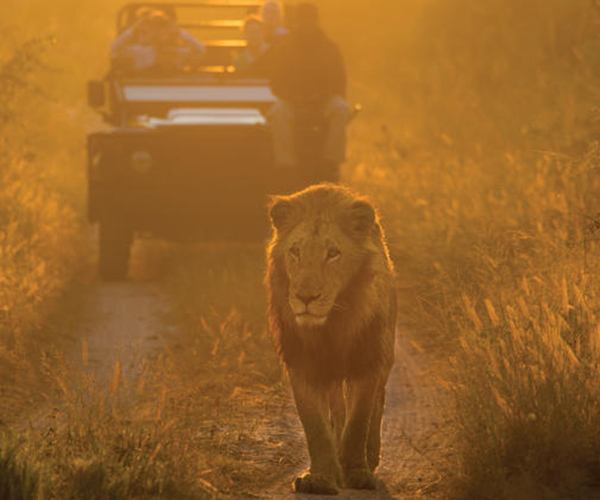 The documentary follows their uprising from cubs to kings and their eventual downfall, yet it highlights certain character traits that are an insightful and extraordinary to see. Their bloodline still lives on today and whilst the Sabi Sands is the area to visit for a chance to see the heirs of arguably the most famous lion coalition in Africa, it is also home to some of the best leopard viewing in the world.
Okavango: River of Dreams
This 3-part series told by the Joubert’s is one of the most cinematically impressive documentaries in recent times. From breath-taking aerial shots above the Okavango Delta, to outstanding underwater scenes in the meandering waterways, not to mention the adrenaline pumping action sequences, this series has it all. What we love about this documentary though, is that it feels like an exploration along the river.
The documentary follows their uprising from cubs to kings and their eventual downfall, yet it highlights certain character traits that are an insightful and extraordinary to see. Their bloodline still lives on today and whilst the Sabi Sands is the area to visit for a chance to see the heirs of arguably the most famous lion coalition in Africa, it is also home to some of the best leopard viewing in the world.
Okavango: River of Dreams
This 3-part series told by the Joubert’s is one of the most cinematically impressive documentaries in recent times. From breath-taking aerial shots above the Okavango Delta, to outstanding underwater scenes in the meandering waterways, not to mention the adrenaline pumping action sequences, this series has it all. What we love about this documentary though, is that it feels like an exploration along the river.
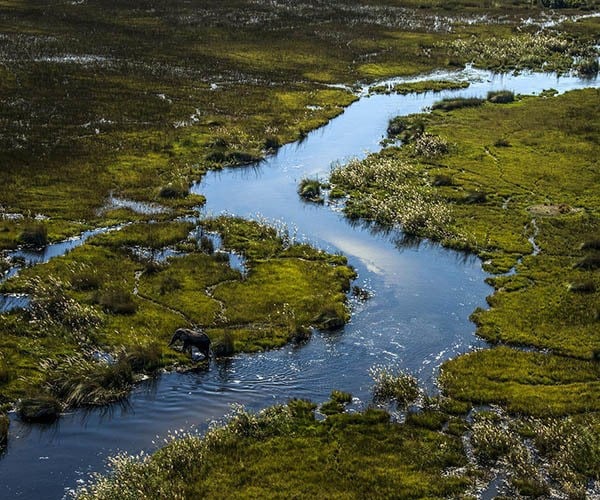 Witness where the first water arrives from the Angolan highlands, through to the fan-like wetland all the way to the sprawling fingers that reach the Kalahari before withering into nothing. This adventure constantly reminds us that it is not just the big things that keep our eco-systems flourishing, although the elephants open up the waterways, fish like the tilapia and barbel are just as important, if not more so, to allow these wild places to flourish.
Witness where the first water arrives from the Angolan highlands, through to the fan-like wetland all the way to the sprawling fingers that reach the Kalahari before withering into nothing. This adventure constantly reminds us that it is not just the big things that keep our eco-systems flourishing, although the elephants open up the waterways, fish like the tilapia and barbel are just as important, if not more so, to allow these wild places to flourish.
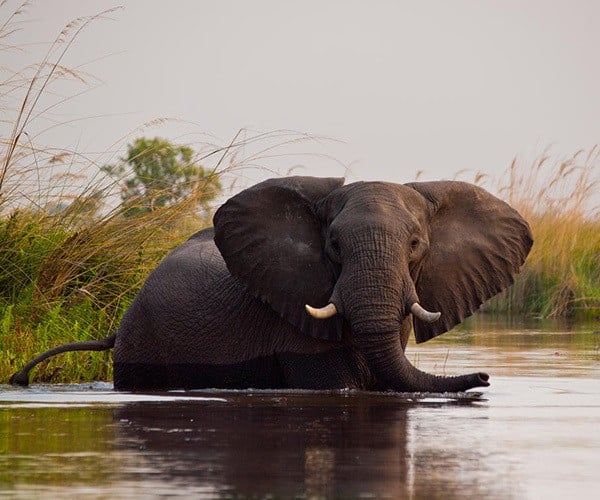 Whilst the Delta is a vast and varied landscape, visiting here guarantees you a private and intimate experience with some of the best wildlife viewing on the planet. Whether you decide to walk, go by vehicle or glide along in a mokoro, exploring the Delta is an invigorating and exciting safari experience.
National Geographic’s Lion Kingdom
The amount of lion documentaries that have been made must number in their hundreds, if not thousands, yet finding one that eclipses them all makes it all the sweeter. Ruaha is known for its huge lion population (around 10% of Africa’s lions call it home) so it is no surprise that some of the best wildlife scenes have been played out here.
Whilst the Delta is a vast and varied landscape, visiting here guarantees you a private and intimate experience with some of the best wildlife viewing on the planet. Whether you decide to walk, go by vehicle or glide along in a mokoro, exploring the Delta is an invigorating and exciting safari experience.
National Geographic’s Lion Kingdom
The amount of lion documentaries that have been made must number in their hundreds, if not thousands, yet finding one that eclipses them all makes it all the sweeter. Ruaha is known for its huge lion population (around 10% of Africa’s lions call it home) so it is no surprise that some of the best wildlife scenes have been played out here.
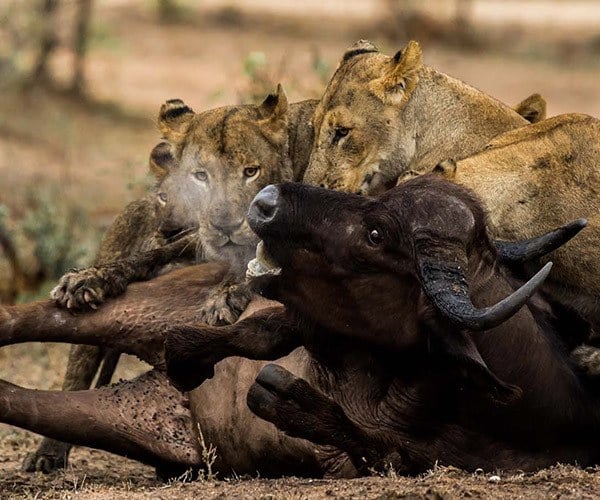 Whilst lions challenging the huge herds of buffalo that congregate in their thousands is still an incredible spectacle, what makes this 3-part documentary series stand out is some of the never-seen-before animal behaviour. From lions digging in riverbeds for water to baboons keeping quiet instead of alarm calling when predators are present, it makes for some extraordinary viewing and of course there is an explosive end to each episode which is not to be missed.
Whilst lions challenging the huge herds of buffalo that congregate in their thousands is still an incredible spectacle, what makes this 3-part documentary series stand out is some of the never-seen-before animal behaviour. From lions digging in riverbeds for water to baboons keeping quiet instead of alarm calling when predators are present, it makes for some extraordinary viewing and of course there is an explosive end to each episode which is not to be missed.
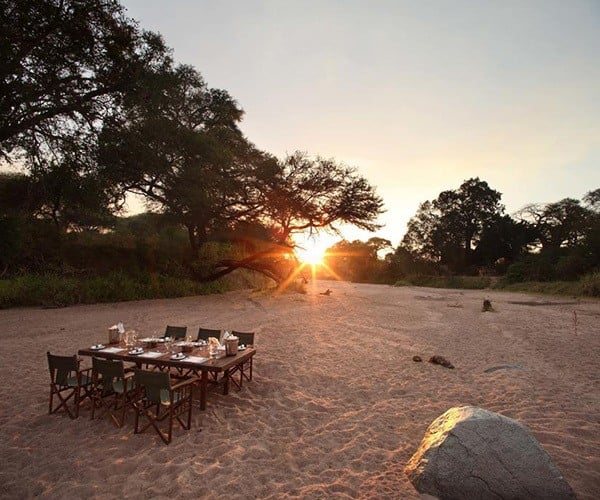 Ruaha is a wild and untamed National Park in the South of Tanzania. With an area the size of Israel, the scale of the park is hard to imagine, especially as there only a handful of lodges here! Shut in April and May due to the long rains, it is towards the end of the dry season (August-October) at camps like Jongomero or Ikuka where you are most likely to witness some of these jaw-dropping scenes.
The Last Animals
Whilst Stroop grabbed most of the headlines, The Last Animals went under the radar, yet it probed deeper in tackling some of the biggest issues in conservation today and this documentary-film is one not to be missed. The illegal trade of ivory and rhino horn is wiping out Africa’s population of these beloved creatures and The Last Animals explores the key battles that are being fought across the continent to tackle this. From the Last Northern white rhino in Kenya to the elephants of Kruger National Park, this is a stark reminder of how quickly Africa’s beloved animals could disappear from our planet. But, there is hope. Exploring the different options that conservationists are taking; from the front-line rangers to the owner’s game farms, the issues tackled are enlightening and hard hitting, creating an incredibly powerful piece of film. Prepare for an emotional rollercoaster.
Ruaha is a wild and untamed National Park in the South of Tanzania. With an area the size of Israel, the scale of the park is hard to imagine, especially as there only a handful of lodges here! Shut in April and May due to the long rains, it is towards the end of the dry season (August-October) at camps like Jongomero or Ikuka where you are most likely to witness some of these jaw-dropping scenes.
The Last Animals
Whilst Stroop grabbed most of the headlines, The Last Animals went under the radar, yet it probed deeper in tackling some of the biggest issues in conservation today and this documentary-film is one not to be missed. The illegal trade of ivory and rhino horn is wiping out Africa’s population of these beloved creatures and The Last Animals explores the key battles that are being fought across the continent to tackle this. From the Last Northern white rhino in Kenya to the elephants of Kruger National Park, this is a stark reminder of how quickly Africa’s beloved animals could disappear from our planet. But, there is hope. Exploring the different options that conservationists are taking; from the front-line rangers to the owner’s game farms, the issues tackled are enlightening and hard hitting, creating an incredibly powerful piece of film. Prepare for an emotional rollercoaster.
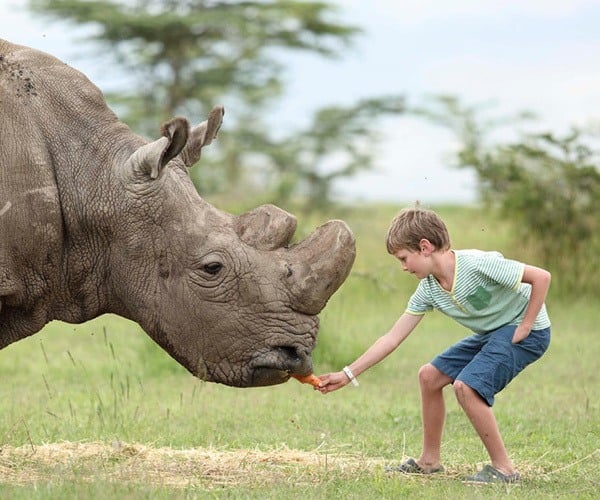 Asilia’s Ol Pejeta Bushcamp is the best place to visit if you want to see the last two Northern White Rhinos. Sadly the last male, Sudan, died in 2018, Ol Pejeta’s conservation work is outstanding and makes for a vital trip if you are in Kenya.
Virunga
The mountain gorillas of the Democratic Republic of the Congo are without doubt the least viewed of the gorilla populations. With Uganda and Rwanda being far safer for tourists, these two destinations have taken the spotlight over gorilla trekking in recent years, but the gorillas of Virunga National Park in the DRC should not be forgotten. In a country embroiled in a civil war, Netflix delves into the problem of poaching, the sacrifices made and the bonds between rangers and the orphaned gorillas. Whilst the rangers battle against poachers on a weekly basis, the civil war gets closer to ‘home’ with filmmakers and participants all caught in the crossfire. Conveying the brutal truth of what it is like to try and protect these precious specious in one of Africa’s longest protected parks, it is no wonder Virunga won countless awards.
Asilia’s Ol Pejeta Bushcamp is the best place to visit if you want to see the last two Northern White Rhinos. Sadly the last male, Sudan, died in 2018, Ol Pejeta’s conservation work is outstanding and makes for a vital trip if you are in Kenya.
Virunga
The mountain gorillas of the Democratic Republic of the Congo are without doubt the least viewed of the gorilla populations. With Uganda and Rwanda being far safer for tourists, these two destinations have taken the spotlight over gorilla trekking in recent years, but the gorillas of Virunga National Park in the DRC should not be forgotten. In a country embroiled in a civil war, Netflix delves into the problem of poaching, the sacrifices made and the bonds between rangers and the orphaned gorillas. Whilst the rangers battle against poachers on a weekly basis, the civil war gets closer to ‘home’ with filmmakers and participants all caught in the crossfire. Conveying the brutal truth of what it is like to try and protect these precious specious in one of Africa’s longest protected parks, it is no wonder Virunga won countless awards.
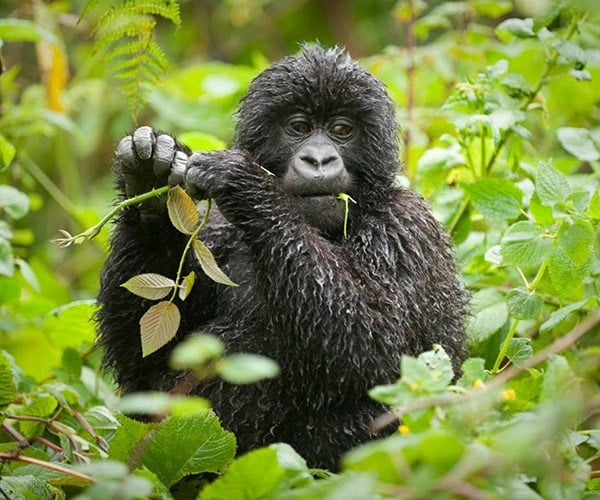 With the DRC being off the radar for most people, Uganda and Rwanda are the places to go gorilla trekking. Whilst Rwanda specialises in the luxury side of gorilla trekking (and with permits being $1,500), Uganda is for the more adventurous and really lends itself to those wishing to have a brilliant all-round experience. With permits being half that of Rwanda, there is also a plethora of other activities, whether you are looking for shoebills on Lake Victoria or hiking and canoeing up to Murchison Falls, Uganda is an exceptional destination.
Big Cat Week
It captured an audience of millions across the UK when it was first aired on television, and rightly so. This is the nitty, gritty side of safari that is often not seen in other documentaries. Located in Kenya’s famous Masai Mara, this series follows the lives of three different predator families: The Marsh Pride, Kike the cheetah and Bella the leopard. From getting stuck in ditches to lunches landing in the presenter’s lap, the big cats’ tales aren’t the only stories to be told. The charming, humorous, and truthful way in which Big Cat Week is filmed and presented makes you feel like you are there in the thick of the action. Whether it is Jonathon Scott, Simon King or Saba Douglas-Hamilton in front of the camera showing their love and explaining the stories behind these beautiful creatures, you can be sure that there are laughs, adrenaline pumping action and beautiful moments.
With the DRC being off the radar for most people, Uganda and Rwanda are the places to go gorilla trekking. Whilst Rwanda specialises in the luxury side of gorilla trekking (and with permits being $1,500), Uganda is for the more adventurous and really lends itself to those wishing to have a brilliant all-round experience. With permits being half that of Rwanda, there is also a plethora of other activities, whether you are looking for shoebills on Lake Victoria or hiking and canoeing up to Murchison Falls, Uganda is an exceptional destination.
Big Cat Week
It captured an audience of millions across the UK when it was first aired on television, and rightly so. This is the nitty, gritty side of safari that is often not seen in other documentaries. Located in Kenya’s famous Masai Mara, this series follows the lives of three different predator families: The Marsh Pride, Kike the cheetah and Bella the leopard. From getting stuck in ditches to lunches landing in the presenter’s lap, the big cats’ tales aren’t the only stories to be told. The charming, humorous, and truthful way in which Big Cat Week is filmed and presented makes you feel like you are there in the thick of the action. Whether it is Jonathon Scott, Simon King or Saba Douglas-Hamilton in front of the camera showing their love and explaining the stories behind these beautiful creatures, you can be sure that there are laughs, adrenaline pumping action and beautiful moments.
 The Masai Mara remains one of the best spots in the world for big cat sightings and with a big portion of the wildebeest Great Migration passing through during July-September, it is no wonder the crowds flock here. Whilst Kichwa Tembo and Speke’s Camp are excellent luxury camps, if you hopped over the border to Tanzania, there are a whole array of different lodges and camps to be explored. The game viewing is just as good as the Mara, but without the huge crowds and day trippers.
Choosing a favourite from these documentaries certainly isn’t easy and all have their own merits. I certainly haven’t touched on every documentary as there are of course plenty more out there that capture the imagination and raise some very important issues, but it would be great to hear about your favourites.
Marc Harris is Managing Director of Africa Odyssey. Africa Oydssey is run by a team of award-winning experts offering tailor-made African safari holidays.
If you would like to be a guest blogger on A Luxury Travel Blog in order to raise your profile, please contact us.
The Masai Mara remains one of the best spots in the world for big cat sightings and with a big portion of the wildebeest Great Migration passing through during July-September, it is no wonder the crowds flock here. Whilst Kichwa Tembo and Speke’s Camp are excellent luxury camps, if you hopped over the border to Tanzania, there are a whole array of different lodges and camps to be explored. The game viewing is just as good as the Mara, but without the huge crowds and day trippers.
Choosing a favourite from these documentaries certainly isn’t easy and all have their own merits. I certainly haven’t touched on every documentary as there are of course plenty more out there that capture the imagination and raise some very important issues, but it would be great to hear about your favourites.
Marc Harris is Managing Director of Africa Odyssey. Africa Oydssey is run by a team of award-winning experts offering tailor-made African safari holidays.
If you would like to be a guest blogger on A Luxury Travel Blog in order to raise your profile, please contact us.Did you enjoy this article?
Receive similar content direct to your inbox.


Africa is truly a home for the wildlife. I’ve watched National Geographic’s Lion Kingdom and it was truly interesting seeing the lions’ natural behavior captured with high definition cameras. I felt like catching my breath in a lot of the scenes. The very first episode was great but it was kind of sad to see what happened to lioness. I’m not sure I couldn’t have stopped myself from meddling when I think something bad is about to happen. But then again, that’s nature in play. Watching wildlife documentaries is like watching a movie from a big screen only that it is not fiction and very educational.
Hi Emmett,
Yes some of the documentaries truly capture some wonderful moments and as your rightly say there are moments where we wish we could help, but it is imperative we do as little as possible when influencing wildlife.
I hope this list gives you some more entertaining documentaries to watch.
Can’t say I’m a huge fan of wildlife documentaries.. I always get a bit squeamish with the violence of nature and predators but my pops love these shows. I’ll forward it on to him. Attenborough is really popular so it’s good to see some BBC action here. It’s a good way to learn as well and like you said with the wild dogs you might be able to see a whole other side to an animal from what you had previously assumed. Lots of good choices here.
Hi Soph,
As you rightly say, nature is brutal, but also a beautiful spectacle. Whilst certain documentaries contain scenes that are quite hard-hitting, you can be sure that the educational aspects of them are second to none.
I hope you can enjoy parts of those listed.
I think wildlife documentaries are one of the few things on television I actually care to watch. I guess I’m just one of those people who prefers to learn about reality. So with these, in my opinion, you can’t really go wrong. I think learning about nature helps us to better understand ourselves. But that’s just me.
Hi Nick,
I completely agree. Understanding our natural world will only benefit us as individuals and as a population.
I hope you enjoyed some of those documentaries mentioned!
Painted Wolves looks really amazing! I never really knew those animals even existed. Okavango is a more familiar name to me, so I’ll have to check that out. And I think I really want to visit Uganda. So many great places to try!
HI Aimee,
Yes they are very charismatic and such wonderful animals to see in the wild.
If you do decide on where to go, make sure you contact us (Africa Odyssey) and we would be more than happy to help put a tailor made trip together for you.